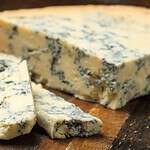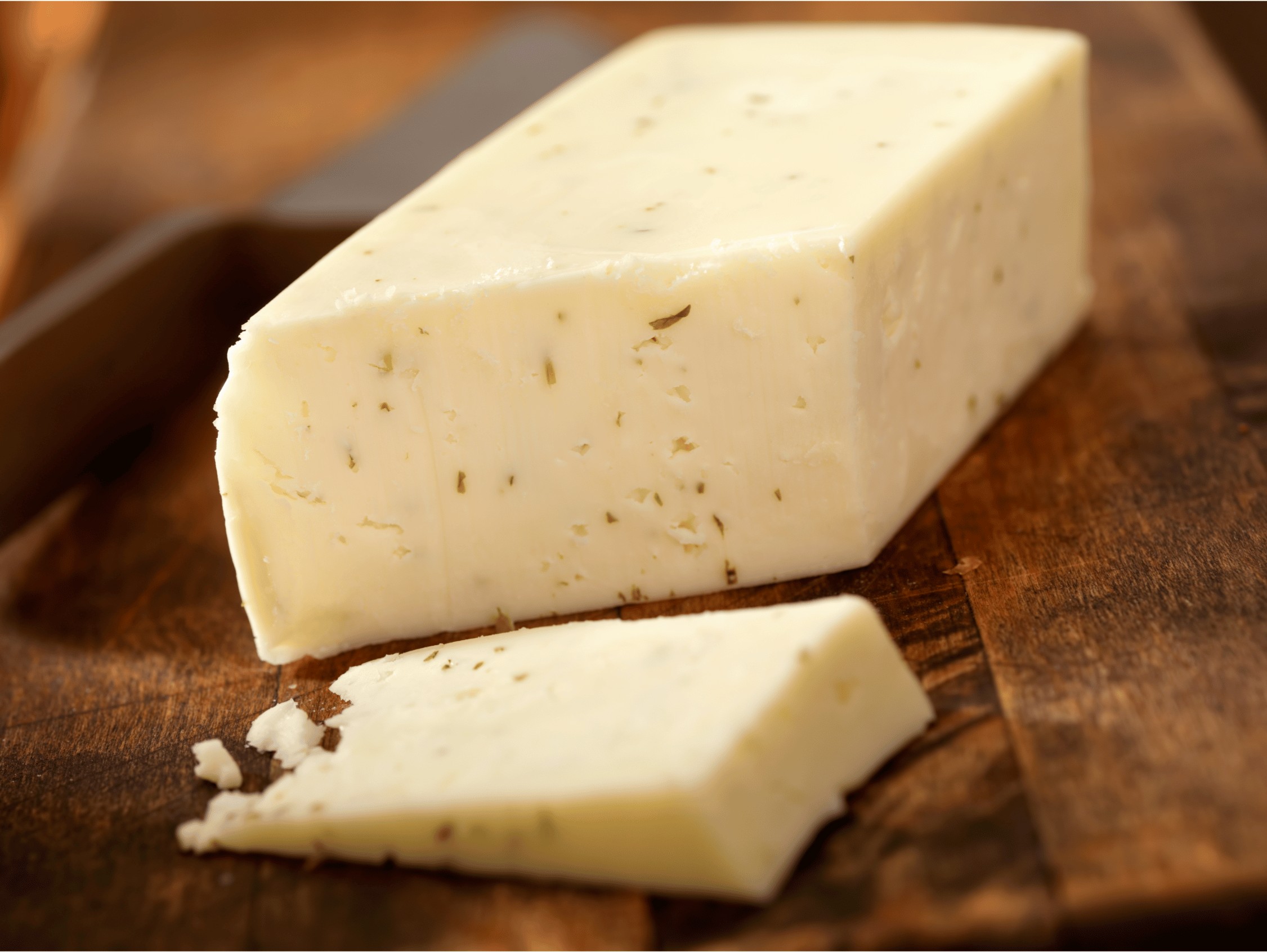Cottage cheese, a versatile and nutritious dairy product, has garnered a reputation as a diet staple for those seeking a healthy lifestyle. Its high protein content paired with a low calorie count makes it an ideal addition to various meals, providing a creamy texture and a mild, slightly tangy flavor that pairs well with a wide array of ingredients. We often incorporate cottage cheese into our breakfast dishes, where it complements fruits and grains, and serves as a protein boost to start the day.

Expanding its use beyond breakfast, cottage cheese serves as a valuable ingredient in main course recipes and as an ideal component of snacks and small meals. Its adaptability means it can be used in both savory and sweet applications, allowing for a variety of pairings from fresh vegetables and herbs to fruit and honey. Additionally, cottage cheese can be included in desserts for a nutritious twist to sweet treats or integrated into dishes influenced by global cuisines, offering a world of taste experiences.
Key Takeaways
- Cottage cheese is a high-protein, low-calorie food item suitable for various meals.
- It can be incorporated into breakfast, main courses, snacks, and desserts.
- This dairy product is adaptable for both savory and sweet recipes, as well as global cuisine.
Nutritional Profile of Cottage Cheese

Cottage cheese is a high-protein, low-calorie dairy product that’s rich in calcium and often considered a healthy and nutritious option for various diet plans. We’ll explore its nutritional composition and compare it to other dairy choices to better understand its place in a balanced diet.
High-Protein Benefits
Cottage cheese is known for its high protein content, which is crucial for muscle repair and growth. A single cup can provide about 28 grams of protein, making it a great option for adding extra protein to our diets. This amount can significantly contribute to our daily protein needs, which support various bodily functions.
- Protein Content: Approximately 28g per cup (226g)
Health Considerations
While cottage cheese is nutritious, containing calcium, and promoting bone health, it’s also low in calories, making it a favorable choice for weight management. However, it can be high in sodium, which we should monitor for a balanced diet.
- Calcium: Valuable for bone health
- Calories: About 163 per cup (low-calorie profile)
Comparisons With Other Dairy Products
In comparison to other dairy products like ricotta, cream cheese, or Greek yogurt, cottage cheese typically offers a lower calorie count and a comparable or superior protein level. For example, Greek yogurt is also high in protein but often has more calories, while ricotta and cream cheese offer less protein per serving.
- Greek Yogurt: Higher calorie but similar in protein
- Ricotta: Lower in protein
- Cream Cheese: Lower in protein and higher in fat
Lactose Content and Dietary Restrictions
Cottage cheese is not lactose-free, but it typically has lower lactose levels than milk, making it more digestible for those with mild lactose intolerance. As a gluten-free option, it suits those on a gluten-free diet and being vegetarian, it’s compatible with vegetarian dietary requirements.
- Lactose: Less than milk, but not lactose-free
- Dietary Suitability: Gluten-free, appropriate for vegetarians
Cottage Cheese in Breakfast Dishes
Cottage cheese serves as a versatile and protein-packed addition to breakfast, seamlessly incorporating into both sweet and savory dishes. We can start our day with a wholesome burst of energy by integrating this ingredient into our morning meals.
Sweet Breakfast Ideas
For a delightful sweet breakfast, cottage cheese can be paired with a variety of fruits like blueberries, apple slices, and more. Drizzle honey or maple syrup for added sweetness and sprinkle a dash of cinnamon or vanilla to enhance the flavor. See the table below for our favorite sweet breakfast pairings with cottage cheese:
| Ingredient | Pairing Suggestion |
|---|---|
| Fruit | Top cottage cheese with sliced bananas, blueberries, or apple slices. |
| Honey | Drizzle honey over cottage cheese for a natural sweetener. |
| Cinnamon/Vanilla | Mix in for a warm, inviting flavor. |
Combining cottage cheese with granola and fruit in parfaits or overnight oats also creates a satisfying breakfast option. Alternatively, incorporate it into pancake batter for fluffy, protein-rich pancakes, or layer onto French toast for a creamy texture.
Savory Breakfast Options
Incorporating cottage cheese into savory breakfast dishes adds a punch of protein and delectable creaminess. Here are some suggestions:
- Use cottage cheese as a filling in omelets or mix into scrambled eggs, adding spinach, diced bell peppers, and a hint of garlic.
- Serve cottage cheese on avocado toast with a sprinkle of pepper for a quick savory treat.
- Combine with greens to create a green salad alongside your standard breakfast fare.
| Ingredient | Savory Pairing Suggestion |
|---|---|
| Spinach/Garlic | Mix into eggs for a flavorful scramble. |
| Avocado Toast | A fresh bed for cottage cheese topped with cracked pepper. |
| Green Salad | Pair with cottage cheese for a refreshing side dish. |
Smoothies and Beverages
Cottage cheese is an excellent addition to breakfast smoothies, contributing to a creamy texture and protein boost. Use a blender to combine cottage cheese with your favorite fruits, such as blueberries or apples, then add a dash of flaxseed oil or chia seeds for added nutrition. Enjoy these creamy and satisfying smoothies as a quick breakfast on the go.
Using Cottage Cheese in Main Courses

Cottage cheese is a versatile ingredient that can add creaminess, protein, and a healthy twist to main courses. We’ll explore how it can substitute meat, enhance pasta dishes, freshen up salads, and be a key ingredient in baked goods and casseroles.
Cottage Cheese as a Meat Substitute
Cottage cheese is a high-protein, vegetarian-friendly option that can take the place of meat in various recipes. It’s particularly effective in dishes like stuffed shells or lasagna, where its creamy texture mimics that of ricotta. To recreate the savory depth often provided by meat, we combine cottage cheese with umami-rich ingredients like mushrooms and tomatoes.
- Example Recipe:
- Vegetarian Lasagna:
- Layers of pasta, cottage cheese mixed with spinach and herbs, tomato sauce, and melted cheese.
- Vegetarian Lasagna:
Pasta and Italian Dishes
Integrating cottage cheese into pasta and Italian dishes offers a healthier alternative to heavier creams and cheeses. It blends wonderfully into sauces like alfredo, creating a lighter, yet still creamy texture. Cottage cheese can also be used in filling dishes, complimenting tomatoes and fresh herbs for a tasty twist.
- Italian Dish Ideas:
- Rigatoni with Cottage Cheese Alfredo and roasted vegetables.
- Caprese-style Pasta Salad with cottage cheese, tomatoes, cucumbers, and olive oil.
Incorporating Cottage Cheese into Salads
Cottage cheese can be a delightful addition to both green and grain-based salads, contributing creaminess without heaviness. Consider making a tuna salad with cottage cheese, or simply stir it into a green salad to add protein and a luxurious texture. It pairs well with tomatoes and cucumbers, making for a balanced and healthy option.
- Salad Incorporations:
- Cottage Cheese Tuna Salad:
- Tuna, cottage cheese, chopped vegetables, and light mayonnaise.
- Cottage Cheese Tuna Salad:
Baked Goods and Casseroles
For a protein boost and moist texture in baked goods, we often add cottage cheese to the recipe. In casseroles, it offers a rich and creamy contrast to the savory elements. Try it in crepes or scones to achieve that fluffy, delicious quality that makes these dishes so loved.
- Baking Ideas:
- Savory Cottage Cheese Scones with chives and cheese.
- Breakfast Crepes filled with cottage cheese and sautéed vegetables.
Snacks and Small Meals Featuring Cottage Cheese
Incorporating cottage cheese into snacks and small meals is a smart way to enjoy its creamy texture and high protein content. Let us explore some delicious options that cater to different tastes and occasions.
Dip and Spread Variations
Cottage Cheese Dip: By blending cottage cheese with desired herbs and spices, we create a nutritious and flavorful dip. A popular choice involves mixing cottage cheese with scallions, hot sauce, and a bit of salsa for a spicy kick. Serve it with an assortment of veggies like carrots, celery, and bell peppers.
- Seven-Layer Dip: Elevate your appetizer game by layering cottage cheese, guacamole, salsa, shredded lettuce, olives, and cheese, topped with diced tomatoes.
Stuffed Vegetables and Appetizers
- Bell Peppers: Slice bell peppers into boats and fill them with a mixture of cottage cheese and your choice of herbs for a refreshing and healthy appetizer.
- Stuffed Shells: Combine cottage cheese with cream cheese, spinach, and herbs to stuff into pasta shells or mushroom caps. Bake until golden and serve warm.
Refreshing Cottage Cheese Pairings
For a light snack, cottage cheese can be perfectly paired with a variety of fruits.
- Fruit Toppings: Top cottage cheese with peaches, fresh berries, or melon chunks for a sweet and satisfying treat. These combinations provide a burst of natural sweetness along with the creamy texture of the cheese.
- Smoothies: Blend cottage cheese into your smoothies for added creaminess and protein. It’s a smart way to make your smoothie more filling and nutritious.
Variations and Homemade Cottage Cheese

Cottage cheese offers a versatile canvas for a range of flavors and textures. Whether we’re creating our own batch from scratch or enhancing store-bought versions, there’s plenty for us to explore.
DIY Cottage Cheese Making
Making cottage cheese at home requires only a few simple ingredients, primarily milk and a form of acidity, like vinegar or lemon juice. To start, we heat milk until it’s warm and then add the acidic agent, stirring until the milk separates into curds and whey. After separating, we collect the curds with a slotted spoon and rinse them to remove residual whey, resulting in fresh cottage cheese that’s ready for further customization.
Flavor Infusions and Mix-Ins
To infuse our cottage cheese with flavor, we can explore a variety of mix-ins:
- Sweet: Adding honey or cinnamon can bring a delightful sweetness. For a fruity twist, jam is a perfect mix-in.
- Savory: A pinch of pepper or a dollop of sriracha adds a spicy kick. Basil can be chopped and mixed in to render an herby freshness.
Incorporating these mix-ins transforms the plain cottage cheese into a more complex and flavorful food item.
Texture and Consistency Adjustments
The texture of cottage cheese can range from larger, chunky curds to a smooth, whipped consistency that resembles mozzarella in its creamy nature. Some prefer it lighter and airier, akin to whipped cottage cheese. To achieve this, we use a food processor to blend the curds until they reach the desired consistency. On the other hand, if we favor chunkier curds, it’s best to keep processing to a minimum. Adjusting the curd size creates a personalized texture that caters to our specific preferences.
Desserts and Sweet Treats

When incorporating cottage cheese into desserts, we aim for a balance between indulgence and nutrition. Cottage cheese’s high protein content can transform sweet treats into more satisfying and healthier options without sacrificing flavor.
Cottage Cheese-Based Desserts
Cottage cheese is versatile in sweet settings, making it an ideal base for protein-packed desserts. Cheesecake with cottage cheese can be light and fluffy, offering a deliciously creamy texture. It’s simple to make too; blend cottage cheese with eggs, a touch of vanilla, and a sweetener of your choice for the filling, and pour it over a crumbly crust before baking.
- Crepes: By adding cottage cheese to the pancake batter, we create luscious crepes that are both tender and nutritious.
- Protein Ice Cream: Blend cottage cheese with maple syrup and vanilla, then freeze for a homemade ice cream that’s richer in protein.
Healthier Dessert Alternatives
For those of us looking for lighter, nutritious dessert choices, cottage cheese is a delightful substitute.
- Fruit Dip: Mix cottage cheese with yogurt and a bit of honey for a creamy dip that pairs well with fresh fruit.
- Sweet Parfait: Layer cottage cheese with nuts, granola, and a drizzle of maple syrup to construct a sweet, high-protein parfait.
Baking with Cottage Cheese
Cottage cheese can be easily integrated into baked goods, adding a satisfying richness and boosting the protein content.
- French Toast: Incorporate cottage cheese into the egg mixture for french toast, resulting in a more decadent and fulfilling breakfast option.
- Baked Goods: Enhance muffins and quick breads with cottage cheese for added moisture and a subtle tang, maintaining a tender crumb.
Through these dishes, we can enjoy desserts and sweet pleasures with a bonus of added nutrition provided by cottage cheese.
Global Cuisine Inspirations
We find that cottage cheese integrates seamlessly into a variety of global dishes, offering a versatile canvas for a wide spectrum of flavors.
Cottage Cheese in Mexican Dishes
In Mexican cuisine, cottage cheese serves as a lighter substitute for traditional cheeses. One can easily incorporate it into tacos or enchiladas, pairing it with spicy salsa and crisp corn tortillas. It’s not atypical for us to use cottage cheese as a topping along with avocado or as a filling, leveraging its creamy texture to balance out the heat of chili peppers.
- Taco Filling: Combine cottage cheese with black beans, corn, and taco seasoning.
- Enchilada Stuffing: Layer cottage cheese with chicken and salsa verde inside corn tortillas.
Eastern European Uses of Cottage Cheese
Eastern European cuisine often calls for cottage cheese in their traditional delectable foods such as pierogi and blintzes. In our experience, the mild flavor of cottage cheese perfectly complements the savory fillings of these dishes. Its fresh curds can be mixed with potato for pierogi filling or rolled into blintzes, making for a satisfyingly rich texture.
- Pierogi Filling: Mix cottage cheese with mashed potatoes, onion, and seasoning.
- Blintzes Filling: Combine cottage cheese with a hint of sugar and lemon zest.
Asian Fusion with Cottage Cheese
Cottage cheese readily absorbs flavors, which makes it ideal for Asian-inspired stir-fries. We often use it as a protein-rich addition to vegetable stir-fries, where it takes on the flavors of soy sauce, ginger, and garlic.
- Vegetable Stir-Fry: Add chunks of cottage cheese to a stir-fry with bok choy, bell peppers, and soy sauce.
- Cottage Cheese “Paneer”: Substitute traditional paneer with cottage cheese in sautéed spinach or curries.
Concluding Thoughts on Cottage Cheese
In exploring the numerous pairings for cottage cheese, we’ve underscored its impressive versatility. Our journey has reaffirmed why it’s a staple in so many kitchens. Its creamy texture and mild flavor profile make it an outstanding base for a myriad of dishes. Whether used as a main component or as an accent, cottage cheese provides a high-quality protein boost as well as a satisfying richness to meals.
Nutritional Benefits: We can’t help but appreciate how cottage cheese serves as a trusted source of protein and calcium. With health in mind, including cottage cheese in our diet offers a delicious way to support muscle maintenance and bone health.
Flavor Combinations:
- Sweet: Fruit preserves, honey, or cinnamon
- Savory: Cherry tomatoes, cucumber, or cracked black pepper
Usage Ideas:
- Breakfast Bowls: Add a scoop to granola and fruit.
- Salads: Sprinkle over greens for a protein-packed lunch.
- Main Dishes: Incorporate into lasagna for a creamy layer.
We encourage you to experiment with cottage cheese in your recipes. Its adaptability allows it to be seamlessly introduced into a variety of meal types, respecting dietary preferences and creative cooking endeavors alike. We trust that our insights have inspired you to consider cottage cheese as more than just a side dish, but a culinary chameleon capable of enhancing your food experiences.
Frequently Asked Questions
Cottage cheese is versatile and can be included in various snacks and meals. Below, we address some common questions to help you easily incorporate this nutritious food into your daily diet.
What are some healthy snack options that include cottage cheese?
We can enjoy cottage cheese as a healthy snack by topping it with fresh fruit like berries or pineapple for natural sweetness. Adding a sprinkle of chia seeds or nuts can also provide a satisfying crunch and added nutrients.
Can you suggest any dinner recipes that feature cottage cheese as a primary ingredient?
One dinner recipe that highlights cottage cheese is stuffed bell peppers: mix cottage cheese with cooked quinoa, vegetables, and seasoning before filling the peppers and baking. Another option is incorporating cottage cheese into lasagna as a lighter substitute for ricotta cheese.
What type of crackers pair well with cottage cheese for a balanced snack?
Whole grain crackers or crispbreads complement cottage cheese nicely. They provide fiber and texture contrast while the cottage cheese delivers a smooth, creamy flavor. Look for options with minimal added sugar or sodium to keep the snack healthy.
What are creative ways to incorporate cottage cheese into meals?
We can blend cottage cheese into smoothies for extra protein or mix it into pancake batter for fluffy protein-rich pancakes. Additionally, it can be used as a topping for baked potatoes or mixed into scrambled eggs for a creamy texture and a protein boost.
How can portion size of cottage cheese be determined for daily consumption?
A standard serving size of cottage cheese is about half a cup. We can measure it with a measuring cup or eyeball a portion roughly the size of a tennis ball to approximate the amount for daily consumption.
In terms of nutrition, what are the benefits of adding cottage cheese to your diet?
Cottage cheese is rich in protein, which supports muscle repair and growth. It also contains essential nutrients such as calcium for bone health, and B vitamins for metabolism. Being low in fat, it’s a great option for those managing their weight as part of a balanced diet.






